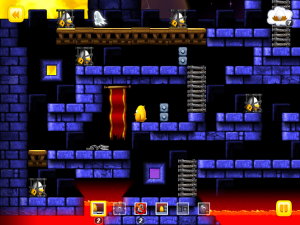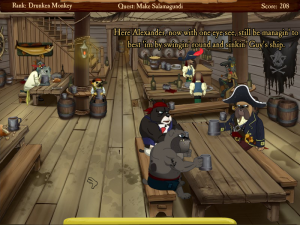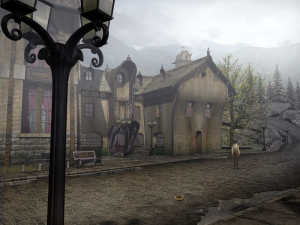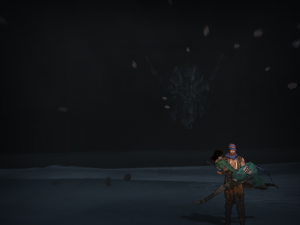Atom Zombie Smasher
Not a lot of time today, so I’ll just post a brief description (which I may expand on later) of yesterday’s session with Atom Zombie Smasher, an impressive one-developer effort from the author of the absurdist first-person spy game Gravity Bone. His sense of weird shows through here mainly in the occasional “vignette” cutsene, illustrated text snippets of odd goings-on with no obvious connection to the game, at least at first.
I have to say, though, that I knew I wanted to give this game a try the moment I saw the screenshots. They’ve got that ineffable Appealing Game factor, the sort that makes me say “Ooh, I bet I could do that! Let me try!” Also, this is one game where the screenshots really speak volumes about what gameplay is like. You play in a series of top-down cityscapes with humans and infectious zombies (represented as yellow dots and pink dots respectively 1Pink is an unusual color for zombies, but I suppose it’s because they’re atom zombies. ), and you have to save the former and kill the latter. You have a single helicopter for evacuation, which can make multiple trips and land in a different part of the city each time, but usually isn’t fast enough to save everyone. Crowds tend to glom together and flow through the narrow streets like fluid through a pipe, their density nicely indicated by brightness when you can no longer see individuals. Into this you place your forces. You have several tools, such as barricades and dynamite charges and zombie-proof infantry (one of the better tools, because it can be moved around). But only a random selection of them is available for use in any particular mission, which means that sometimes you get stuck with inadequate offensive power and have to rely entirely on delaying tactics. It all feels very much like a tower defense game, despite not having a whole lot in common with the customs of that genre beyond the mere act of placing defenses.
These matches take place within the context of a randomized overworld and escalating stakes. You and the zombies are both rated on performance in the mission and in continuing control of territory, and this contributes to a running score, represented as progress along a track. Whichever side reaches the end of that track first wins the overall game. It reminds me of the scoring tracks found on certain German board games, and it serves the same purpose: distilling a complicated set of rules about victory points into something you can simply see. At certain points along that track — different points for the player and the zombies — are several little circles marking events that grant permanent advantages when you reach them. So, when you reach a certain score, you get a powerful new weapon, and when the zombies reach a certain score, they suddenly start spreading to new territories faster, or start producing giant zombies. So there’s a strong motivation to not just try to beat the zombies to the end, but also to try to keep their score as low as possible. Obviously this system creates a positive feedback loop, but the zombies have such strong natural advantages that they always seem to almost keep pace with the player anyway. Conversely, if you fall behind, there’s basically no catching up.
In length, it falls into an unusual place alongside Oasis: a full campaign is composed of many missions, but is nonetheless a completable in a single sitting. It’s a typical board-game length, if I can make that comparison one more time. I suppose it invites comparison to board games with its top-down view and abstract figures. And, like a board game, it inspires replay. Not in a “gotta find all the secrets and Achievements” way, but in a “I could do that a lot better now that I’ve figured out the tactics a little” way, kind of like Civilization (itself a computer game inspired by a board game).
| ↑1 | Pink is an unusual color for zombies, but I suppose it’s because they’re atom zombies. |
|---|
 Comments(0)
Comments(0)


